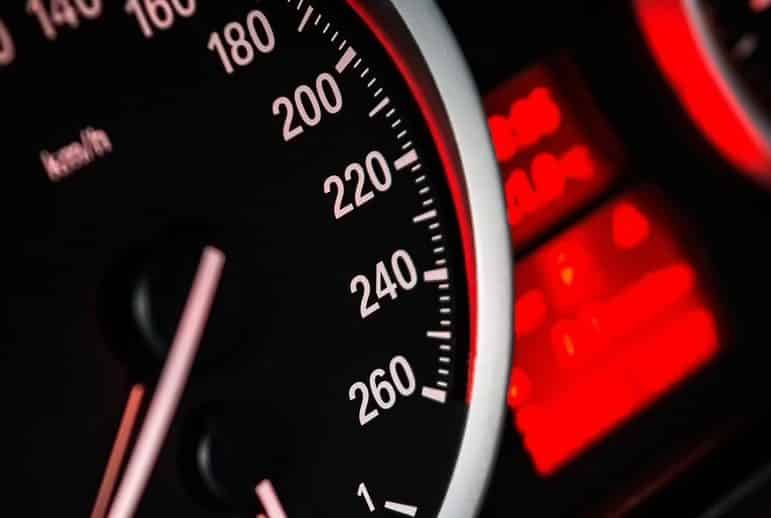ACCELERATION LANE
Proven Driving School Marketing Ideas To Grow Your Business.
How to Start a Driving School in Washington State: A Step-by-Step Guide

Here you’ll learn everything you need to start your Driving School in Washington
Compared to many states, Washington makes it relatively easy to establish a driving school. You still need to complete forms, and meet requirements, but the state seems to be driving-school friendly.
Washington driving schools may offer classroom instruction, behind-the-wheel training, or both. Some driving schools may also provide testing for state license purposes.
How to open your driving school in Washington
- Washington State requires all driving schools to be licensed through the Department of Licensing.
- Driving instructors must also be licensed, and have several requirements placed on them.
- Driving schools must have their own premises; you may not operate out of your home.
- You must maintain certain student records for three years, but you do not need a specific contract.
- You may offer the 30-hours of classroom instruction required for all new drivers under 18. The classroom instruction must coordinate with the 6 required hours of behind-the-wheel instruction.
- Driving schools may also provide some or all of the required 40 hours of daylight driving or 10 hours of night driving required before teens can get their licenses.
Driving School Licensing and Requirements
General requirements/School License
To operate a driving school in Washington, you will need to be licensed by the state. Licenses are valid for 1 year from the date of issuance. Your application requires
- A completed application form.
- The application free of $500 plus $12 per staff member or non-instructor owners.
- A completed fingerprint and background check through IdentoGO.
Owners do not need to meet specific individual requirements.
The current regulations for driver training schools are available online.
Washington state requires driving schools to carry $1 million minimum insurance coverage, including liability, property damage, and uninsured motorist coverage.
If you have employees, you must carry workers’ compensation insurance covering them–and you–in the event of injury while on the job.
Driving Instructor’s License
While no specific requirements are set for driving school owners, instructors must demonstrate qualification before they receive a license from Washington. The process to apply is outlined by the state. Driving instructors must
- Submit a completed application and fee of $150.
- Be licensed to drive for at least 5 years and possess a current valid Washington state licence. The license essentially has to be clean. If you live in a neighboring jurisdiction, your valid license from that jurisdiction will count.
- Be at least 21 years old, and have the equivalent of a high school diploma
- Compete a 60 hour course in driving instruction, and passed the examination.
Location
You are generally free to establish your business anywhere you see fit–meeting the requirements outlined below. You can choose to have classroom space, or you may conduct classroom driver education at off-site locations, including local public or private schools. Your contract with the school should be included in your license application.
You must display your license conspicuously in your office, along with the driving instructor licenses of all your instructors.. If you are providing classroom instruction at your own site, the classroom must be large enough to hold all students–including desks/chairs. You must provide adequate light and heat, as well as at least 1 unisex restroom with a functioning lock.
You may not establish a location, or do business within, 1,000 feet of a location used by the Department of Licensing to administer driver license examinations. You’ll need to have regular hours in which the public can contact with the owner or staff during stated business hours.
Your school name cannot be substantially similar to that of another driving school, and you may not use the words “State”, “Government”, “Municipal”, “City”, or “County” in the school name, and you must use your school’s name only in advertising and publicity.
If your office and classroom are in the same premises, the must be separated by walls or partitions, or the schedule set so that office activities do not interfere with classroom instruction.
Don’t ever give a student or parent the impression that your instruction guarantees receiving a driver’s license–you may mention your pass rate.
Class size must not exceed local fire code requirements. Class hours may not overlap from one class to another.
Records and Contracts
You will need to keep records of all students for at least three years after they finish their training with you.
You need to create a student record on the state provided form (or one which is substantially the same). The record will track all class and instruction time, as well as dates of the course, fees paid, test results, and other information.
Other records you must keep for at least 3 years include
- Your curriculum guide(s)
- Insurance policies
- Collision/injury reports
- Vehicle registration records
- Employee traffic violations.
While you do not have to provide written contracts with your students, you must provide each student (and parents) with your written policies which covers your:
- Enrollment criteria.
- Standards for course failures and repeats.
- Minimum and maximum course duration.
- Refusal to admit students under 15 or after the third class session..
- A description of Washington’s intermediate licensing requirements.
Your student record should show that they have received these policies.
The Driving School Curriculum in Washington
Your classroom and behind-the-wheel instruction must be complementary–the skills must be aligned. Your classroom course for students under 18 must be at least 30 hours long as well as either 6 hours of behind the wheel instruction or 5 hours of behind the wheel training, 4 hours of simulator time. In addition, one or more hours of observation must be included.
You may provide no more than two hours of classroom instruction and one hour of behind-the-wheel training per day. At least fifty percent of each course must be instructor-led direct instruction, teacher/student interaction, and questions/answers.
You must also include a parent session of one hour which can count towards the thirty hours if students are present.
Washington expects the classroom portion of the course will cover the following topics; you need to indicate several key components in your driving school license renewal application.
- Knowledge of the Washington motor vehicle and traffic laws as well as organ donation
- Traffic signs and car management
- Driving on different surfaces and in different kinds of traffic.
- Driver responsibility and accident reporting
- Defensive driving
- Drugs, alcohol, and mental attitudes
- Distracted driving
- Maintenance and emergencies
- Basic driving skills
Your behind-the-wheel course must ensure that each student can demonstrate ability in the following skills:
- Stopping, starting, and shifting
- Turning, lane changing, and lane positioning
- Signaling and merging
- Backing, parallel parking, and steering
Commercial Driver’s License Instruction
Providing instruction for students pursuing a CDL in Washington generally follow those for the regular driver’s license. In this section, we’ll note the key differences.
Information
The form to apply for a truck driver training school license is available as a fillable pdf. You will also need to apply to the Workforce Training and Education Coordinating Board at the same time. The application should include a curriculum outline for all instruction you will provide.
Your CDL course must include 160 hours of instruction, organized as follows:
- 40 hours in-class
- 18 hours on street
- 16 hours of backing
- 16 hours of proficiency development
- 70 hours of combined lab/range training and observation
The student records you must retain–for five years–include
- Course attendance with starting/ending dates
- Dates and times of each session
- Hours on each category
Starting a Small Business in Washington
Your driving school is not just subject to the requirements for driver’s education in Washington. You also need to establish your Driving School as a small business, and have to consider a number of factors. The form of business you take up, as well as the procedures, are appropriate topics of conversation with your lawyer and accountant. The considerations we offer here are not legal advice, but should provide you with things to think about as you set up your business.
Business Registration
All businesses need to register in Washington, especially the business name—the “doing business as” certificate. Banks may not be willing to set up your account until you have that DBA form. We’ll include where to register in the business structures below.
You will also need to obtain a Federal Employer Identification Number. Banks may need it for your business accounts, and you may be wanting to employ people. To obtain an EIN, go to the IRS website and complete the application form you find linked there.
Washington state provides information on starting a business in the state. You may have to register with the Department of Revenue.
The state has an online portal which will guide you through the process.
Business name
Before you get going, you’ll want to check to see if the business name you want is in fact available in Washington. You can search the Washington database, as well as visit the office of the county recorder.
Once you know your business name is available, you can reserve it online with the Secretary of State–if you’re forming a corporation or LLC.
Sole Proprietorship
Owning your own business is the easiest one to set up, but also may open you to liability concerns. As a sole proprietor, your business is simply part of your life. You keep a separate set of books, and complete a Schedule C for your 1040 form every April.
Sole proprietorships can expose the proprietor for full liability, even with insurance. That may mean that if you are sued, you may lose your home and property, as well as your personal bank accounts and other assets. This risk may not be worth the ease and independence.
In Washington, the big step you have to take is to register your Doing Business As trade name form with the Secretary of State.
Corporations and LLCs
You may set up a full corporation (“Inc.”) as your business structure. Corporations limit your liability for loss to your investment in it, as a general rule (although banks may require you to be obligated personally if you take out a loan to get your business going). This form of business keeps your personal assets safe.
As an owner of a corporation, you’ll have to set up your driving school consistently with the rules for corporations in Washington–those rules can be found at <this state run website>. You’ll also have to decide whether to be an S Corporation or a C Corporation. Generally, the S Corporation form is set up for small businesses. It allows income and taxes to pass through to the owners. You will want to discuss these forms with your attorney and accountant.
You may be able to set your driving school up as an LLC in Washington. The LLC form provides the same limited liability as a Corporation, but do not have to comply with the corporate formalities most states require, including items like bylaws, required stockholder meetings, and minutes (although minutes of meetings are probably a good idea).
You’ll have to discuss the advantages and disadvantages for the LLC with your attorney and accountant.
Both Corporations and LLCs file with the Secretary of State. In addition to name reservation, you’ll need to file with the Secretary of State.
Now What Do I Do?
Once you’ve complied with all the legal requirements to be both a driving school and a small business in Washington, you need to get students.
Getting students requires marketing—largely on the internet. You will need the following systems set up to obtain students:
- A website—focused on the types of students you want to attract, and aimed at your locality.
- The website should also include a blog, which allows you write about a variety topics and engage in Search Engine Optimization—which will drive traffic to your site.
- A Facebook page, linked to your website, to become noticed and drive traffic.
- Getting testimonials from successful students.
Marketing is something you will have to devote time to. DrivingSchool.Marketing can help you get the best bang for your marketing buck.
Conclusion
Disclaimer: This page is part of DrivingSchool.Marketing’s series of state and provincial pages designed to help entrepreneurs like you start driving schools. States change their regulations, or the web pages they host their forms. While we believe these rules are accurate as of the date of publication, we cannot guarantee full accuracy. Please let us know if you spot any problems.
Josh Meah
Latest posts by Josh Meah (see all)
Copyright 2020 All Rights Reserved. All digital marketing services are managed by JoshMeah.com







